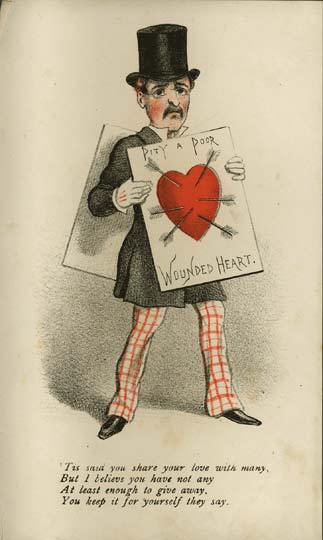Valentine’s Day. For some, the celebration of love conjures feelings of anticipation and eagerness to spend time with that certain someone. Showing their appreciation in a myriad of ways; from hearts and flowers to fancy dinners. In fact, romantic dinners for the day of love are so popular that it’s almost impossible to find a free table anywhere. Nevertheless lovers enjoy the day with grand gestures and soppy rom-coms. Yet for many singletons, the day can induce feelings of loneliness and the overwhelming urge to hide away and console yourself with self brought chocolate.
But Valentine’s Day hasn’t always looked like this; it has changed and evolved throughout different ages and cultures. So, come with us as we take you on the Valentine’s Day trip of a lifetime… and many, many other lifetimes too actually!
The legend of St. Valentine(s)
Valentine’s Day dates all the way back to the Roman Empire and the legend of St. Valentine. Or… the other St. Valentine. Truth is, there are actually three St. Valentines that the day might be named after. And just make it even more confusing, they were all born and martyred in the 3rd century. The first was a Roman holy priest, the second a Roman bishop, and the third? A man from North Africa.
The first St. Valentine was a holy priest born in 270 A.D. As the story goes, the cruel Emperor Claudius II banned marriages and engagements in Rome, in an effort to encourage men to join his army instead. However, Valentine came to the rescue for lovers, by performing secret marriages. While this certainly made him a very worthy namesake for the day of love, his bravery unfortunately resulted in his execution. Which supposedly happened on February 14th. But wait, the legend gets even more romantic; before his execution Valentine left a note for his ‘friend‘ the jailer’s daughter. Signed…. “From your Valentine.”
The second Valentine, St. Valentine of Interamna, is said to have also been executed by Claudius. Though for not so romantic reasons – this time because Valentine tried to convert Claudius to Christianity. Which given that the Catholic church later established Valentines day isn’t too much of stretch!
Very little is known about our third St. Valentine from North Africa; he’s an international man of mystery. Which leaves us wondering, could his anonymity have inspired our use of anonymous Valentine’s cards? It’s possible!
The Day of Feasts
The hopeless romantic in us would like to believe the first Valentine is the OG. But regardless of who exactly the day was named after, the Catholic Church may have had ulterior motives when they established Valentine’s Day. Historians speculate that Valentine’s Day may have been an effort to “Christianise” Lupercalia.
The feast of Lupercalia was a wild pagan festival of fertility, taking place from the 13-15th of February. During which young men would strip naked and sacrifice a dog or goat. They would then use the animal hides to whip young women in a bid to increase fertility. It was still widely celebrated at least 150 years after Christianity was legalised in the Roman Empire. Though, may have prompted the creation of a tamer, Christian variation of the holiday. Thank God…literally.
Lupercalia was eventually cancelled by Pope Gelasius. He came to power in the late fifth century and soon after, the Catholic church declared February 14 to be a day of feasts to celebrate the martyred Saint Valentine.
 Depiction of lupercalia
Depiction of lupercalia
Poetry and lovespoons:
Although Valentine’s Day was established in the 5th century, it wasn’t until the end of the Middle Ages that it’s association with romance and love was really solidified. In the 14th century, Geoffrey Chauncer’s ‘The Parlement of Foules’ became the world’s first Valentine’s poetry. The poem talks about a meeting of birds on Valentine’s Day, as they choose their mates. He connected the day to courtly love, a popular notion in the middle ages denoting pure love and admiration between a noble woman and a knight. The connection between Valentine’s Day and romance was continued by other poets throughout the centuries, and even today, the idea of poetry is still very romantic. In February 1477, we also saw the world’s first Valentine’s Day letter, from Margery Brews to her fiancé, her “welebelovyd voluntyne”.
In the same century, Wales established their own version of Valentine’s Day: St. Dwynwen Day on January 25th. This holiday celebrated the patron of love, a Welsh princess who was, ironically, very unlucky in love and became a nun. She nonetheless generously prayed for other true lovers to have more success than she did. People who celebrate often give each other hand-carved lovespoons, a tradition dating back to the early 17th century. The spoons are unfortunately not used as functioning spoons today, but they are very intricately made and make a beautiful keepsake. Kind of puts a whole new meaning to ‘Fancy a spoon?’ don’t you think?

Victorian Expression Of Affection
It’s in the 18th and 19th centuries that England’s celebration of Valentine’s Day becomes a bit more familiar to the modern day. In this time, it was common for lovers to gift each other Valentine’s Day cards, hand-made with ribbon and lace. The Uniform Penny Post, established in 1840, meant that Valentine’s day cards could be sent by post for a penny! And with that Valentine’s Day exploded in popularity. Only a year later, 400,000 Valentine’s cards were posted throughout England. In 1868, the heart-shaped chocolate box was invented by Cadbury, and the Victorians relished this Valentine’s Day gift too. Thus the beginning of commercialism for Valentines day.
It was probably also the beginning of trolling but don’t quote us on that. Due to the anonymity of many Valentine’s cards, some were unfortunate enough to receive what the Victorians called ‘Vinegar Valentines’. These Valentine’s cards ranged from playful to hateful and cruel. They were essentially – hate mail making fun of society’s outliers. With drunks, cheating men, and old maidens usually the one’s to fall foul. Thank goodness that, while Valentine’s cards remain popular, we have managed to leave Vinegar Valentines in the past.
 Vinegar Valentine from the 1870's
Vinegar Valentine from the 1870's
Love By The Bucketload
The 20th century saw a wide commercialisation of Valentine’s Day. You can blame Hallmark Cards, for this one. They led the way with their first mass-produced Valentine’s card in 1913. The rise of TV and film later in the century also led to marketing commercials, as well as a multitude of cheesy movies celebrating the day.
In 1936, Valentine’s Day managed to spread to Japan, but it didn’t find huge popularity until the 1970s. From there, Japan, South Korea and other Asian countries have put their own spin on the celebration. Due to the fact that Valentine’s Day often resulted mostly in women giving gifts to men, White Day was established in 1978. This holiday is celebrated one month after Valentine’s Day, on March 14th. Designed specifically for men to express their love and appreciation back to their partners. It is alternatively called “Marshmallow Day”, as marshmallows and other white sweet treats were marketed as the perfect White Day gift.
Just to make sure no one gets left out, Black Day was established in South Korea for April 14th, celebrating singles this time. On this day, singles group together to eat black coloured food, especially jajangmyeon, and find light and humour in their single status. With a similar sentiment, in Finland, Valentine’s day is celebrated as Friendship Day. Beginning in the 1980s, the Finnish chose to use the day of love to appreciate and give gifts to friends and family, rather than focusing on purely romantic relationships. This celebration of all kinds of love fosters an inclusive, healthy appreciation of love.
 Which would you prefer?
Which would you prefer?

Love is Love
Today, the impact of the internet and commercialism means that Valentine’s Day has become somewhat shallower than it was. Rather than hand-crafted cards and romantic poetry, it is estimated that £35 per person is spent on Valentine’s gifts in the UK. Believed in part to be down to the pressure social media puts on couples to show how they celebrate the day. There are so many gifts, restaurants and activities marketed for lovers that it can sometimes lose it’s sentiment. Not to mention, exclude those who aren’t coupled up or are in non-conventional relationships.
Nevertheless, efforts have been made in recent years to diversify and revamp Valentine’s Day to include everyone. WWF’s 2021 campaign Love It or Lose It, for example, focused on our relationship with our planet. Showcasing diverse people and places to emphasise the way we need to love and appreciate nature on Valentine’s Day too! Whilst Finland was way ahead of us, there has been a recent emphasis in Britain on celebrating friendship on Valentine’s Day, with TV show Parks & Recreation coining and popularising the phrase ‘Galentine’s Day’. Perhaps the key to a happy and inclusive Valentine’s Day, then, is shifting the narrative away from romance. Instead, widening the scope to all kinds of love, whether platonic, romantic, or self-love.
However you chose to celebrate we wish you a happy Valentine’s day! With love, The Inclusion Post.

